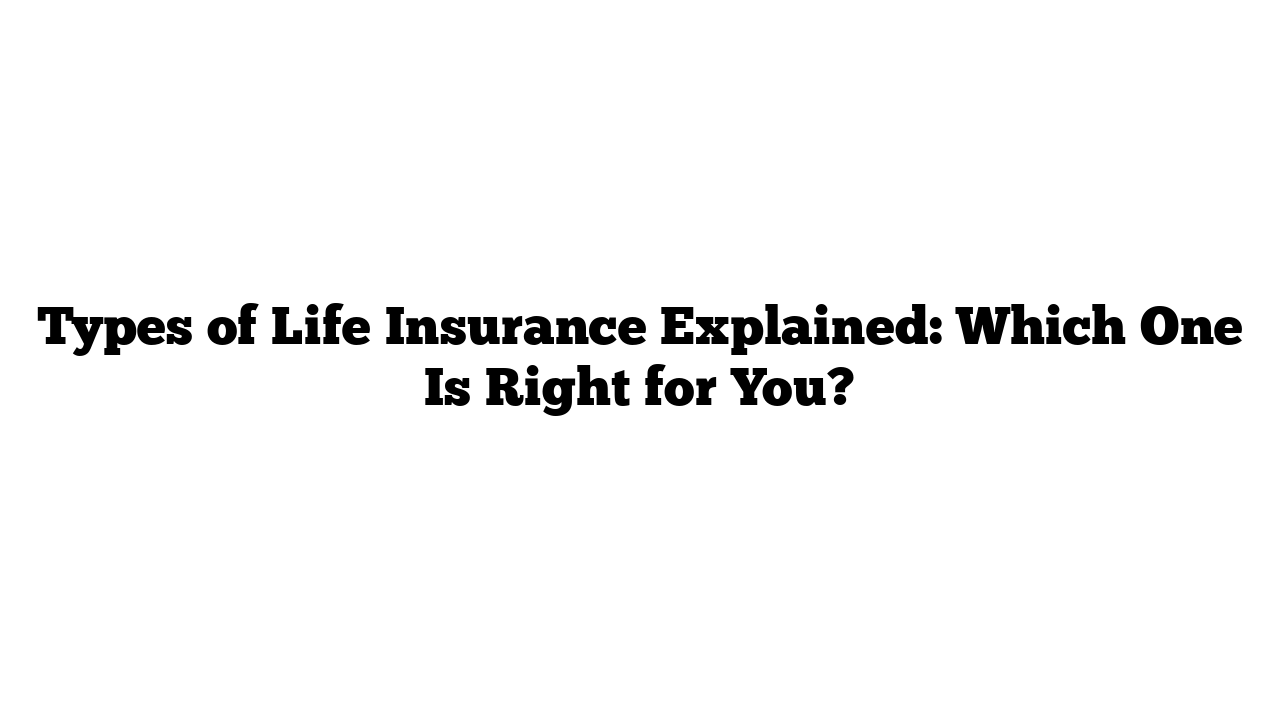Life insurance is one of the most important decisions you’ll make to secure your family’s financial future. But with so many options, how do you choose? Let’s break it down and explore the two main types of life insurance: Term Life Insurance and Permanent Life Insurance. Understanding the differences will help you make an informed decision based on your specific needs.
Temporary vs. Permanent Life Insurance
There are only two basic types of life insurance: Temporary Coverage, known as Term Insurance, and Permanent Life Insurance. Both have different structures designed to meet different needs.
Permanent Life Insurance: Designed for Long-Term Needs
Permanent Life Insurance is meant to last your entire life. If your needs are long-term, such as estate planning, covering final expenses, or simply leaving a legacy to your family, permanent insurance is likely the right option.
Two Main Types of Permanent Insurance:
- Whole Life Insurance
- Universal Life Insurance
We’ll dive into these a bit later.
Term Life Insurance: Best for Temporary Financial Needs
Term Life Insurance, by definition, is temporary. It offers coverage for a set period, typically 10, 20, or 30 years. This kind of policy is often simple and extremely affordable.
Why Choose Term Life Insurance?
- It’s affordable and provides the most coverage for the lowest premium.
- Premiums remain level for the length of the term.
However, once the term ends, your premiums may skyrocket—sometimes increasing by 10 times or more. But many term policies come with a conversion option. This allows you to convert your term insurance into permanent insurance without a medical exam.
Who Should Choose Term Life Insurance?
Term life insurance makes sense if:
- You anticipate a time in the future when no one will depend on you financially. For example, when your children are grown, or your mortgage is paid off.
- You’re younger and primarily want to protect your family at the lowest cost.
Example: A healthy, non-smoking 30-year-old can purchase a 20-year, $250,000 term life policy for less than $20 a month in the USA. Yes, it really is that affordable.
Permanent Life Insurance: Whole Life vs. Universal Life
Now let’s return to Permanent Life Insurance. It’s generally more expensive than term insurance, but it offers significant advantages, particularly for long-term planning.
Whole Life Insurance:
- Lasts forever—until the day you die, as long as you pay your premiums.
- Builds cash value over time, which you can access for any reason.
- Premiums remain level for life. You don’t have to worry about rising costs as you age.
Many people refer to Whole Life Insurance as the “Rolls-Royce” of life insurance. It may cost more upfront, but over time, it creates significant cash value that grows guaranteed—regardless of what happens in the economy.
Universal Life Insurance:
- Offers flexibility. You can adjust your premiums and death benefits as your financial situation changes.
Why Permanent Life Insurance?
Unlike term insurance, permanent life insurance is designed to last your entire life. This means that as long as you pay your premiums, your family will receive the death benefit no matter when you pass. It also allows you to build cash value over time. You can use this cash value for any purpose, whether it’s paying off debts, covering emergency expenses, or even supplementing your retirement income.
If you prefer, you can arrange to pay off your policy in a shorter period (e.g., 10 years), after which no further payments are due.
What’s the Best Kind of Life Insurance?
The answer to this question is both simple and complex. It depends on your needs. If there were only one “best” kind, there wouldn’t be so many options!
As an example, I personally own all three types of life insurance. I bought my Whole Life Policy 25 years ago. I pay $4,635 each year, and now, it has a cash surrender value of $217,000. That’s better than many of my other investments!
At the end of the day, the best kind of life insurance is the one that’s in force when you pass away. If your policy isn’t in place at that time, then it wasn’t the right choice for you.
Find the Right Fit for You
For most people, the best way to ensure their policy remains in force is to choose a plan with level premiums for life. That way, you won’t face rising costs as you age, and you won’t need to worry about passing a medical exam down the road.
If you have questions, don’t hesitate to reach out to a licensed life insurance agent who can guide you through your options. For more helpful information, visit medicaltimes.io.
Remember, the most important thing is making sure you have a policy that protects your loved ones when they need it most.
